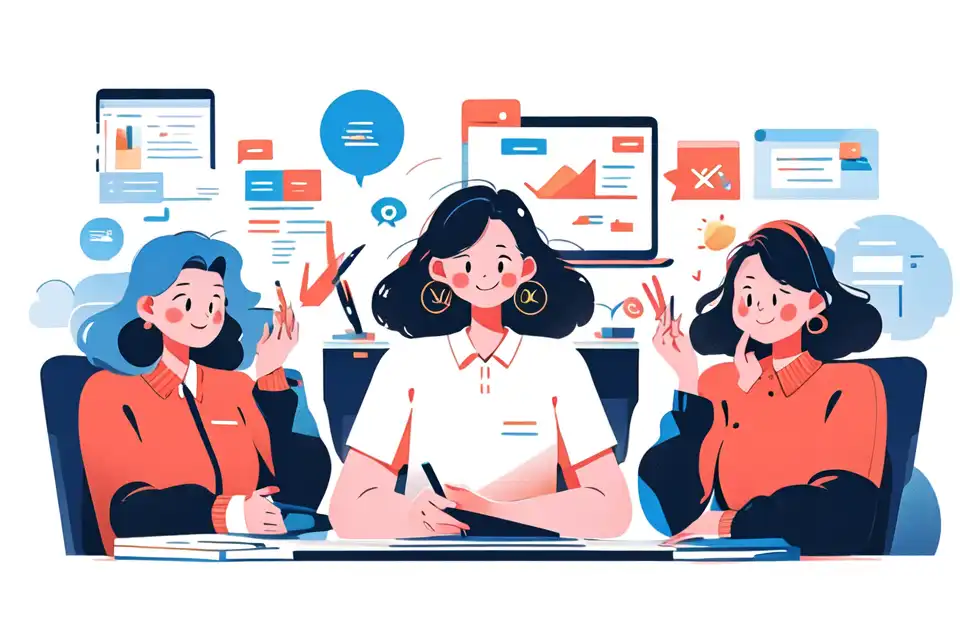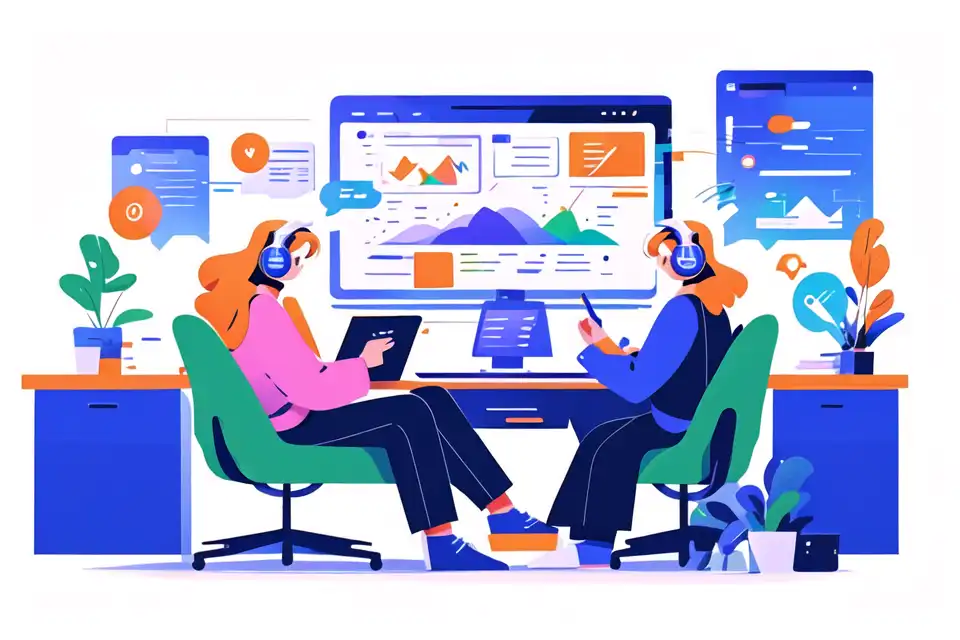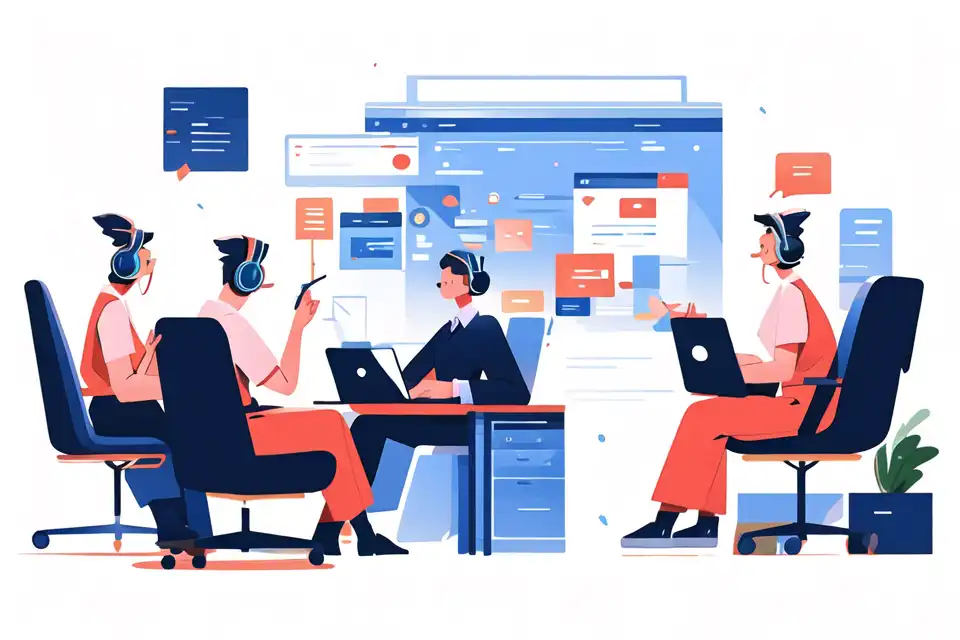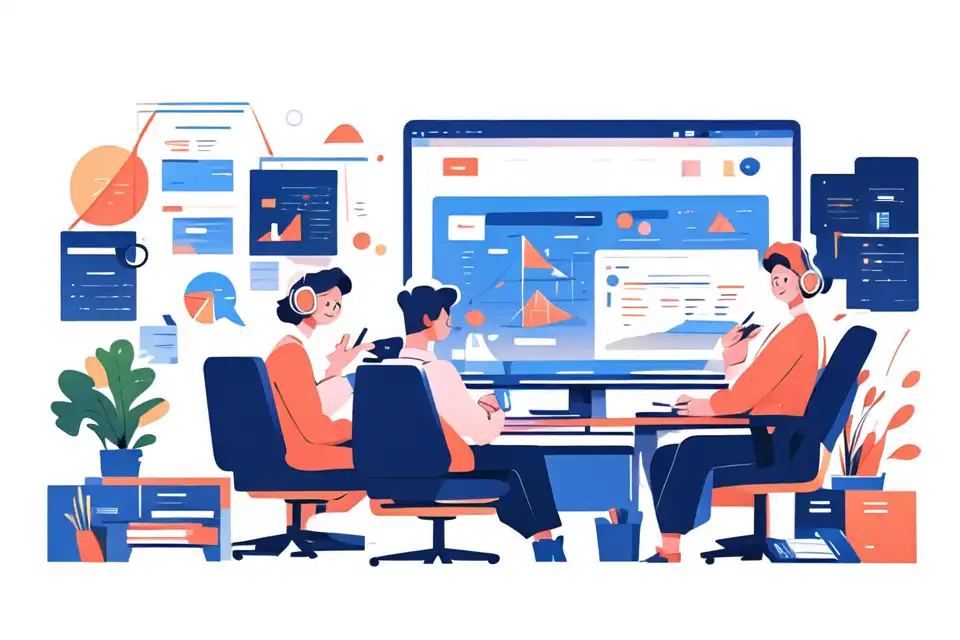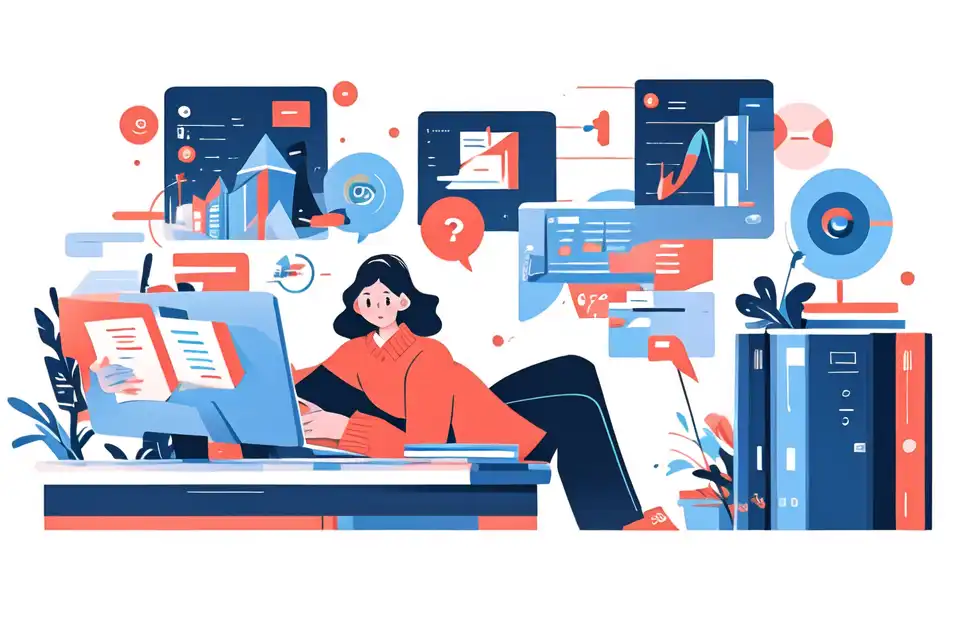Blended Learning Solutions
Learn about the top tips and strategies in blended learning solutions
Try Lark for Free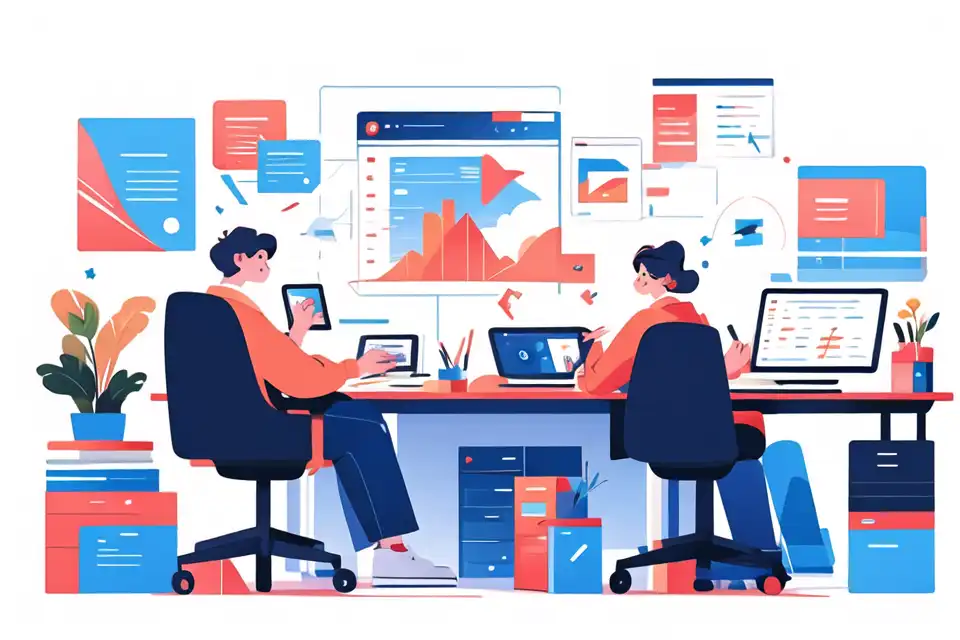
Overview of Blended Learning Solutions in the Educational Context
Blended learning solutions are reshaping the educational landscape. They seamlessly integrate traditional face-to-face classroom instruction with contemporary online learning technology. This ingenious fusion allows for a more personalized, flexible, and engaging learning experience. Blended learning solutions amalgamate the best aspects of both learning environments, thus offering learners the opportunity to actively participate in their education while maintaining the critical social element of in-person learning.
Importance of Blended Learning Solutions in Modern Learning Environments
In the digital age, blended learning solutions have become increasingly relevant. They offer tremendous flexibility, allowing students to learn at their own pace and according to their own style. Furthermore, these solutions enhance accessibility, making education more inclusive. They cater to diverse learning needs and ensure that all students, regardless of their geographical location or personal circumstances, can access quality education.
Interesting Trends and Statistics on Blended Learning Solutions
The growing popularity of blended learning solutions is backed by solid research and statistical data. According to a study by eLearning Industry, blended learning increases knowledge retention by 60% compared to traditional instruction methods. The same study also reports a 50% improvement in learning efficiency when blended learning methods are employed.
Unlock the power of Lark to elevate your business operations. Discover actionable strategies and best practices in our comprehensive guide.
Benefits of blended learning solutions
How Blended Learning Solutions Enhance Teaching and Learning
Blended learning solutions transform the teaching-learning process. They foster an environment that encourages active learning, collaboration, and critical thinking. Instructors can leverage technology to present complex concepts in more engaging and digestible ways. For example, a platform like Lark allows educators to share interactive presentations, hold virtual breakout sessions, and receive real-time feedback from students.
Impact on Student Engagement and Outcomes
Research supports the positive impacts of blended learning on student engagement and outcomes. According to a report from the Online Learning Consortium, blended learning environments lead to increased student engagement, improved grades, and higher course completion rates compared to traditional classrooms.
Implementing blended learning solutions in education
Steps to Integrate Blended Learning Solutions into the Classroom or Curriculum
Implementing blended learning solutions involves a phased approach. Initially, educators need to identify the learning objectives and how blended learning can enhance achievement of these objectives. Next, they should choose the right technology tools, such as Lark, that enhance interactive learning. Lastly, they should design a combination of online and offline activities that align with the learning objectives.
Tools and Resources Needed for Blended Learning Solutions
Key tools for implementing blended learning include Learning Management Systems (LMS), video conferencing tools, e-learning content, and collaboration tools. For instance, Lark offers a suite of features, including video conferencing, real-time collaboration, and a smart calendar, that can facilitate a seamless blended learning experience.
Related:
Education Solution | LarkLearn more about Lark can help you with everything mentioned so far in the article.
Case studies and examples
Success stories of blended learning solutions in educational institutions
Success stories of blended learning solutions in educational institutions
Several educational institutions have successfully integrated blended learning. For instance, Arizona State University adopted a blended learning approach and saw a 45% increase in student engagement. Additionally, the British Council used blended learning to enhance English language acquisition among students in East Asia, resulting in significantly improved language proficiency scores.
Lessons learned from real-world applications
Lessons learned from real-world applications
These case studies reveal some key takeaways. Blended learning can significantly enhance student engagement and outcomes. However, successful implementation requires careful planning, the right technology tools, and continuous adaptation based on student feedback.
Challenges and solutions in blended learning
Potential Obstacles When Adopting Blended Learning Solutions
Despite its benefits, implementing blended learning can pose several challenges. These include technology accessibility issues, adapting teaching styles to fit the blended approach, and student resistance to change.
Strategies to Overcome These Challenges
To overcome these challenges, institutions can provide necessary technical support and training for educators, involve students in the planning process, and use versatile platforms like Lark that cater to various learning styles.
Learn more about Lark can help you with everything mentioned so far in the article.
Future of blended learning solutions in education
Emerging Trends Related to Blended Learning Solutions
Looking ahead, blended learning solutions will continue to evolve. Emerging trends include AI-powered adaptive learning systems, gamified learning experiences, and immersive technologies like augmented reality (AR) and virtual reality (VR).
Predictions for How Blended Learning Solutions Will Shape Education
With continuous technological advancements and a growing focus on personalized learning, blended learning solutions are poised to become the norm in education. They will continue to democratize education, making it more accessible, engaging, and effective.
Conclusion
Recap of the Significance of Blended Learning Solutions
Blended learning solutions represent a significant shift in education. They bridge the gap between traditional and digital learning, offering a more flexible, personalized, and engaging learning experience.
Final Thoughts on Embracing Blended Learning Solutions in Education
Blended learning solutions are not just a trend but a future-oriented approach to education. It's high time for educators and institutions to embrace this transformation and harness the potential of blended learning for a more inclusive and effective education.
Related:
Education Solution | LarkLearn more about Lark can help you with everything mentioned so far in the article.
Faqs on blended learning solutions
What is Blended Learning?
Blended learning is an educational approach that combines traditional classroom teaching with online learning. It provides a flexible and personalized learning experience.
How Does Blended Learning Enhance Student Engagement?
Blended learning enhances student engagement by providing interactive, personalized learning experiences. It allows students to learn at their own pace and style, which boosts their engagement and motivation.
What are the Challenges in Implementing Blended Learning Solutions?
The challenges in implementing blended learning solutions include technology accessibility issues, adapting teaching styles to fit the blended approach, and student resistance to change.
How Can Lark be Used in Blended Learning?
Lark can be used in blended learning to facilitate video conferencing, real-time collaboration, and scheduling. It offers a suite of features that enhance interactive learning and communication.
What is the Future of Blended Learning Solutions in Education?
The future of blended learning solutions in education is promising. With the advent of AI-powered adaptive learning systems and immersive technologies, blended learning will continue to evolve and redefine the educational landscape.
Unlock the power of Lark to elevate your business operations. Discover actionable strategies and best practices in our comprehensive guide.
